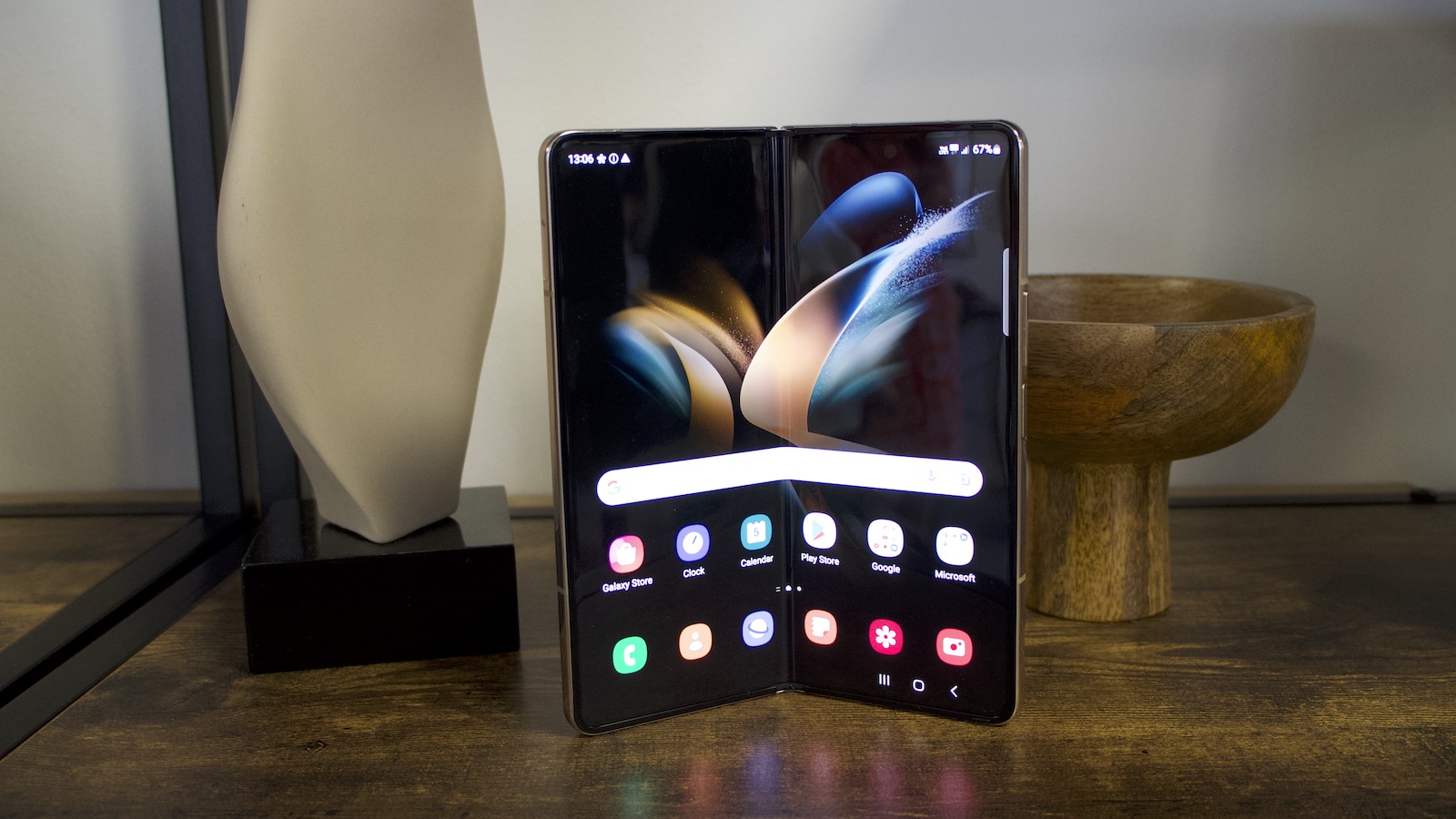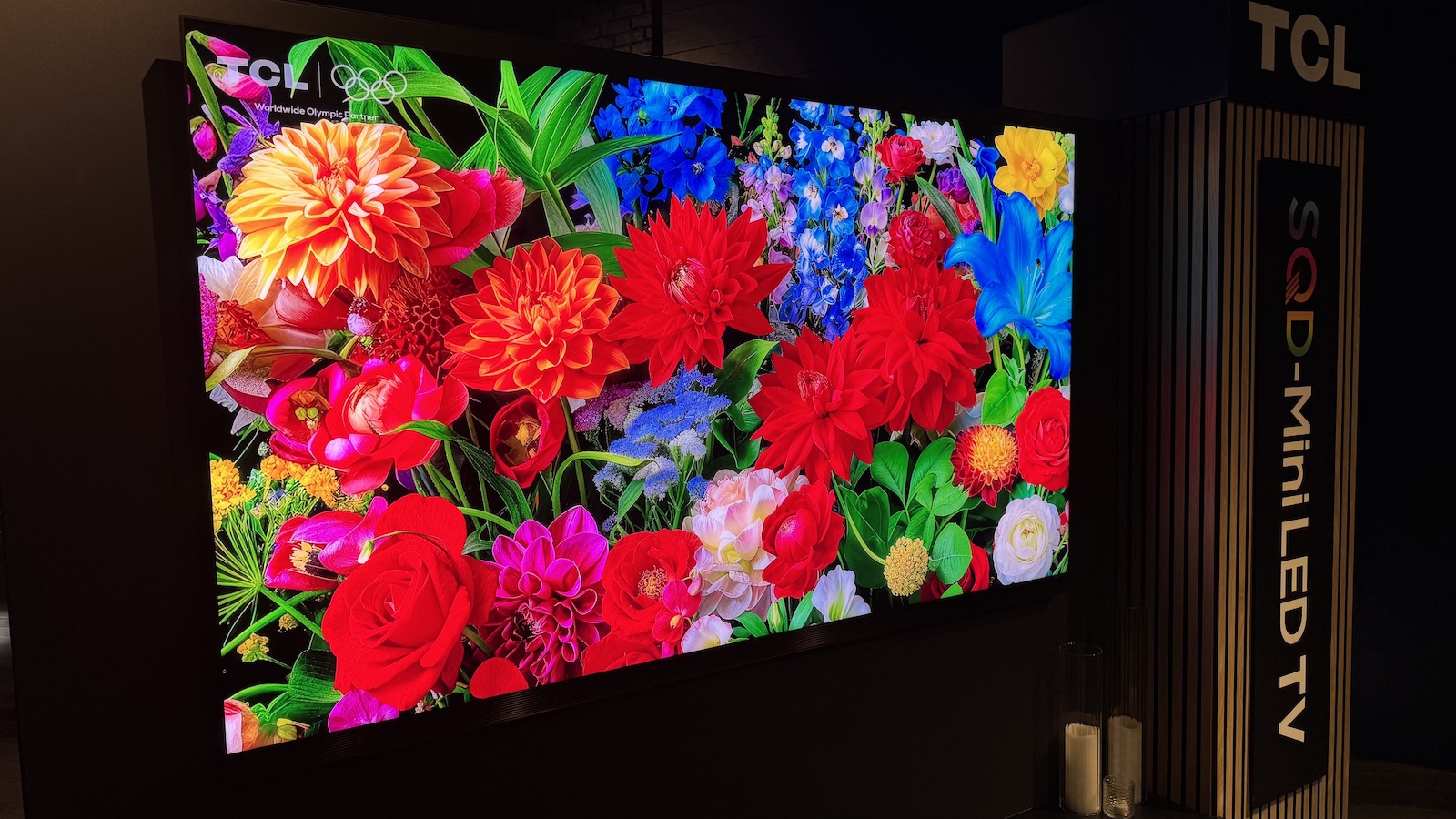Early Verdict
Pros
- +
Powerful specs
- +
Expansive AMOLED display
- +
Sturdy build
Cons
- -
Crease still noticeable
- -
Still less robust than standard phones
Why you can trust What Hi-Fi?
Samsung has shown commitment to what it see as the future of mobile phones with its Galaxy Z line of folding devices. And with the Galaxy Z Fold 4, Samsung appears to have settled on largely repeating the design and overall philosophy of the Z Fold 3 before it, instead of looking to significantly innovate.
Still, improvements to the display, cameras and UI potentially make this a more impactful upgrade than the familiar shell might suggest.
While the Galaxy Z Fold 4 has only just been revealed to the world, we have already had time to get hands on with the new folding flagship smartphone, and though we’re not yet in a position to deliver a full verdict, we’ve got plenty of first impressions.
Design & features
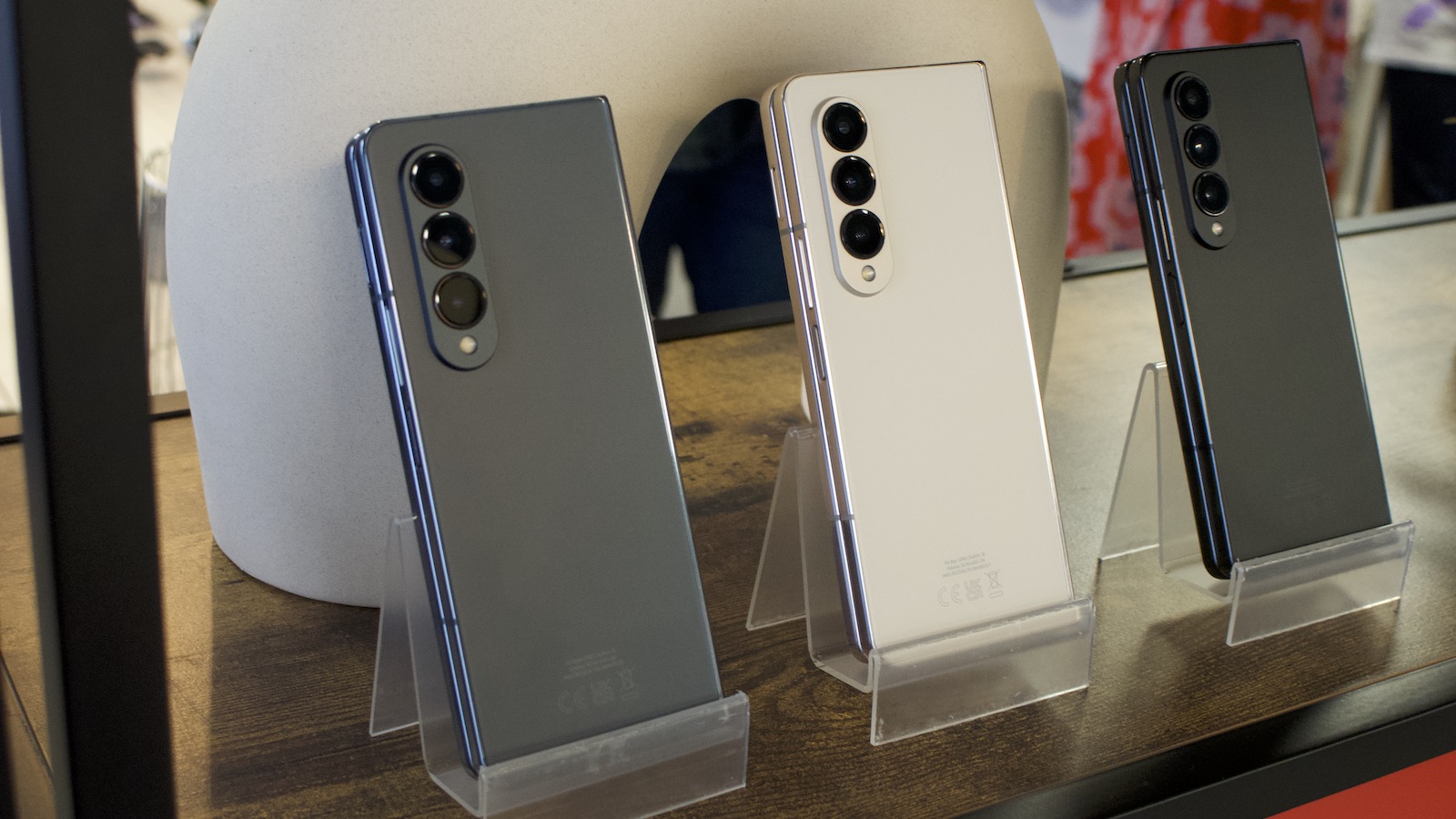
The design of the Fold 4 is almost entirely unchanged from that of its predecessor. It's still a book-style device joined by an ‘Aluminium Armour’ hinge, with a skinny cover display on one side and triple camera array on the other. Unfolding the device still feels a little space-age, unveiling the expansive canvas that’s unlike any other mainstream phone. It's hard not to crack a smile the first time you unfold the phone and see the screen beam into life. Even after four generations it still feels like a device straight out of a sci-fi movie.
It comes in three equally attractive finishes: Phantom Black, Beige and Grey-Green. These hues adorn a soft touch matte glass finish on the rear of the device that does more than catch your eye and feel good in the hand. The matte texture makes the device easier to grip, something that is especially important when you consider how you will be handling the device. The last thing you want is to drop the Fold mid-unfold, so the extra security from the grippy backing is appreciated.
The most noticeable distinguishing feature of the Z Fold 4 from the Z Fold 3 is the slightly slimmer bezels. Samsung has shaved 3mm off the bezel surrounding the 7.6-inch foldable display, in keeping with the futuristic vibe of the Fold and creating a slightly more immersive experience with the edge to edge screen. Another futuristic aspect of this folding display is the under-screen front facing camera, which has now been updated to be even less noticeable. When not using the front-facing selfie camera, the Z Fold 4 hides it away to form a completely uninterrupted canvas, only uncovering it when it needs to be used. It's by no means perfect, but it's mostly convincing and watching the selfie cam appear out of thin air when opening the camera app is yet another mini sci-fi moment.
The S-Pen support of last year’s Fold 3 returns for the Fold 4, with two versions available that are designed for digital artists and note-takers respectively. The S-Pen is an optional extra, however, and unlike the Galaxy S22 Ultra, there’s no storage slot for it within the Fold’s casework, making it a cumbersome and possibly easy-to-lose addition to the Fold.
The latest hi-fi, home cinema and tech news, reviews, buying advice and deals, direct to your inbox.
Productivity gets a boost via a software overhaul based on Android 12L, a variation of Android made for foldable devices and tablets. The Z Fold 4 now has a desktop-like taskbar running along the bottom of the display, making it easier to drag apps up for split-screen multitasking.
Samsung will always be fighting an uphill battle when it comes to foldable devices, as concerns about durability and functionality will always loom large, but in the hand the Z Fold 4 feels sturdy, and snapping the display shut feels satisfying. It's clear Samsung has come a long way since the early days of its folding phones.
Screen
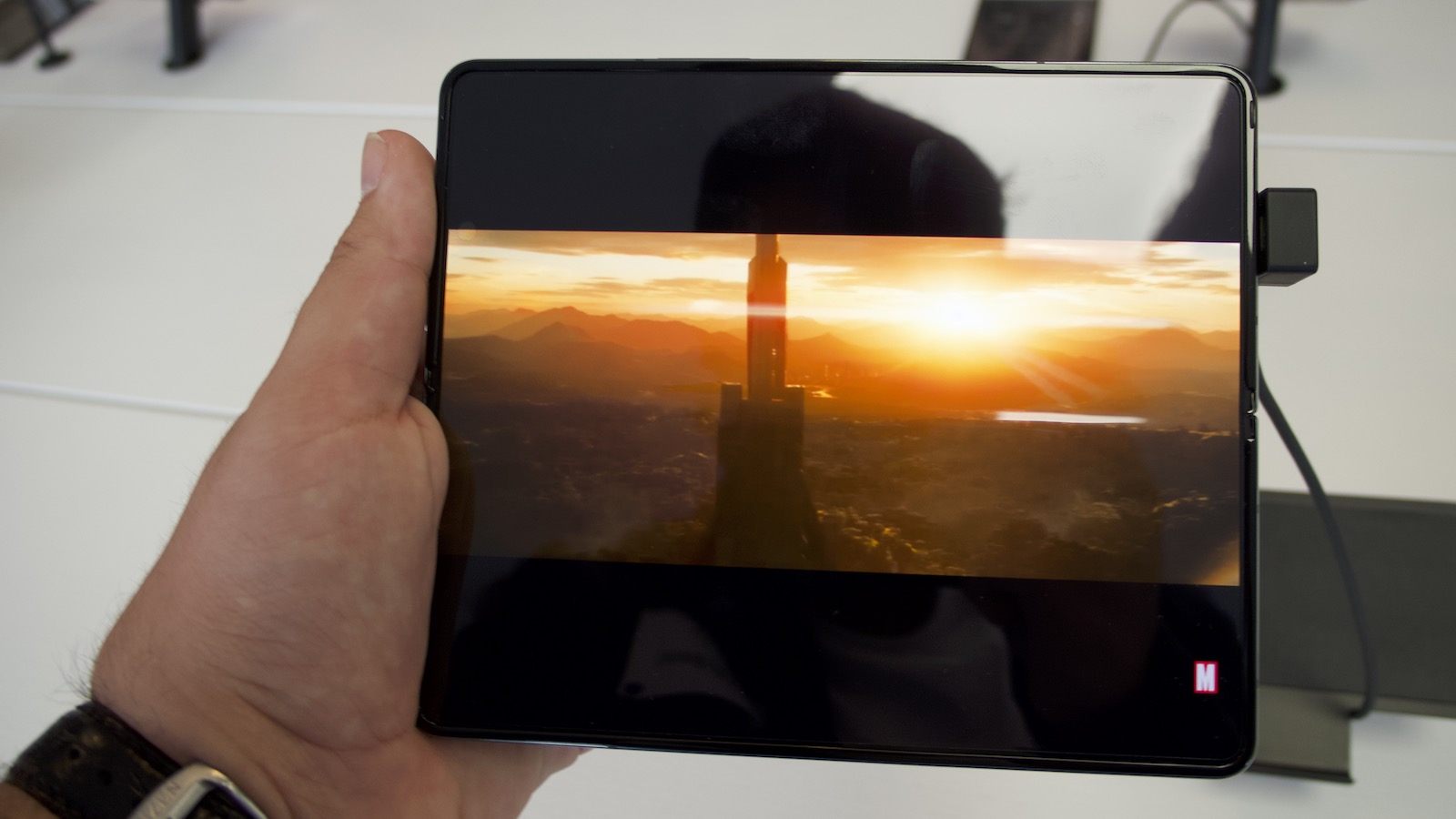
Both screens on the Z Fold 4 are very enjoyable to use during our brief hands-on session, with each appearing to make a convincing case for why you should use it.
Starting with the cover screen found on the front of the phone when it's folded closed, this is as close as you’ll get to a traditional smartphone experience of the Fold 4.
It's a 6.2-inch Dynamic AMOLED display running at an HD+ resolution of 2316 x 904, and it’s capable of a varying refresh rate of up to 120Hz. It's skinnier than the average smartphone display, and it has its own use case compared to the more tablet-like experience of the unfolded main display. For example, if you need to send a quick message, or take a quick scroll through a social media feed, the cover display is still a no-compromise approach with smooth scrolling and a sharp picture for when you just don't need the extra real estate of the main display.
It may not be great for watching video content due to the awkward aspect ratio, which results in bulky black bars around video content, but that’s what the main display is for – this screen is there for everything else. The smooth and responsive 120Hz screen helps to demonstrate how snappy the Fold 4 is, and thanks to it using AMOLED technology, colours appear punchy and blacks look deep.
Unfolding the phone is where the real magic happens, as you’re met with the expansive canvas of the main screen. This display is much bigger and sharper than the cover display, and it uses the same Dynamic AMOLED technology to deliver smooth motion, rich colours and inky blacks.
Samsung says that this display is ideal for both work and play, and we’re inclined to agree as the spacious screen can be used for split screen multitasking for maximum mobile efficiency, as well as being ideal for portable gaming and video consumption. During the hands-on session we were unable to download the suite of streaming apps that we’d usually use for reviewing, but we were able to use YouTube in order to get a flavour of what the device can do. The newest trailer for the upcoming Black Panther sequel Wakanda Forever burst into life with rich blue oceans and fiery orange sunsets amplified by the AMOLED display’s vibrant colours. Details in skin and clothing textures looked sharp enough, although it's once again worth noting that the only option we had to test was YouTube, and we’ll need unfettered, long-term access to a review sample before we can properly judge the Fold 4’s capabilities as a portable movie machine.
Sound
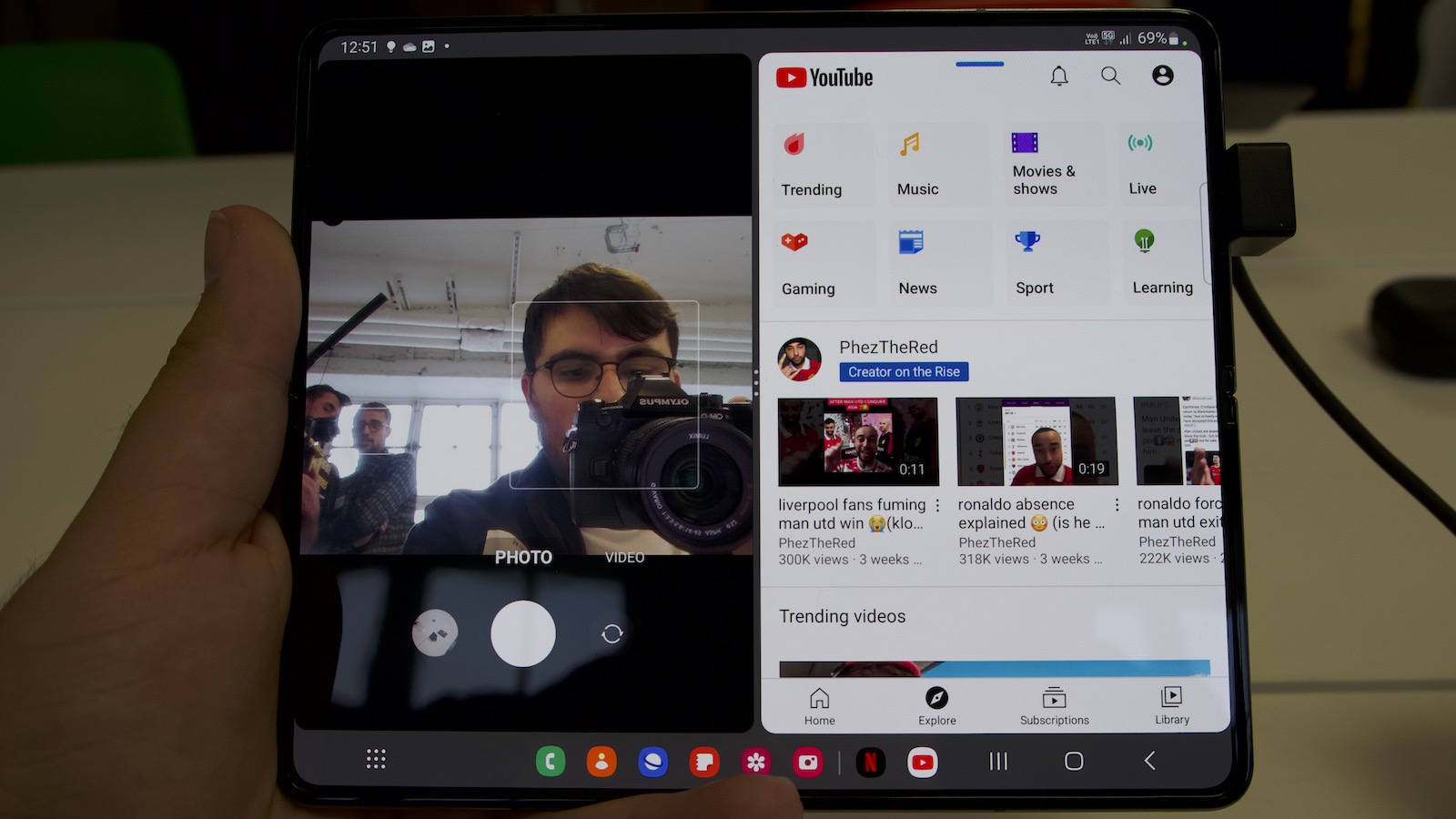
We didn’t get to do any extensive audio testing on the Z Fold 4, nor did Samsung really mention its capabilities; so some speculation based on the Fold 3 might be necessary. Like its predecessor, the Fold 4 lacks a wired audio connector, so you’ll have to rely on Bluetooth or a USB-C to 3.5mm adapter for headphones and speakers. Last year’s Fold 3 featured a stereo loudspeaker set-up with Dolby Atmos certification, which means that the Fold 4 should enjoy a similarly well specced loudspeaker set-up.
Once again, we’ll need a review sample to get to know what this Fold is really capable of in the audio department, but we can make predictions in the meantime.
Verdict
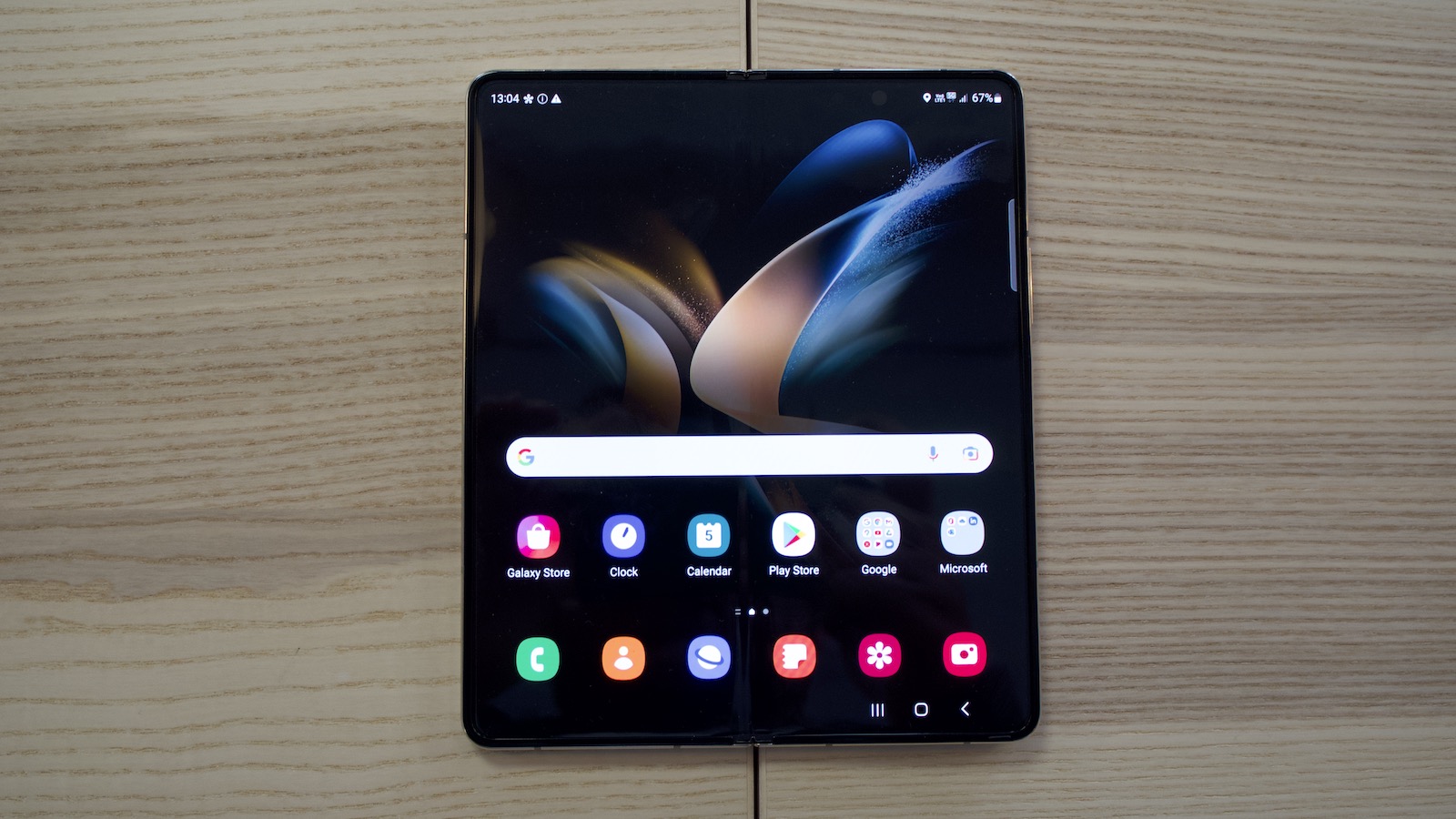
The Samsung Galaxy Z Fold 4 is a refined take on the foldable design that many are still sceptical to adopt as their daily device. It feels sturdy in the hand and is packed with features, making it closer to becoming a prospective daily driver than any foldable has been before. It seems like the ideal device for work and play, with the 7-inch screen practically begging to be used for film and TV watching on the go.
While it has certain promise, there are some features that will give many people pause for thought, including the inevitable display crease, the long-term durability of the device (which Samsung promised it has improved with tougher glass) and app compatibility, which is still not guaranteed after four generations of foldable phones. It’s also not a cheap device, so it remains to be seen if it's worth paying the premium for the foldable form factor.
In short, our hands-on with the Fold 4 has left us torn. Of course, we’ll be reserving full judgement until we’ve got a sample to fully test anyway. Could this be the foldable phone to persuade everyone to ditch their traditional handsets? We’re sceptical it does enough that the Fold 3 didn’t already do, but time will tell.
MORE:
Read our Samsung Galaxy S22 Ultra Review
Check out our picks for the best Android smartphones
What Hi-Fi?, founded in 1976, is the world's leading independent guide to buying and owning hi-fi and home entertainment products. Our comprehensive tests help you buy the very best for your money, with our advice sections giving you step-by-step information on how to get even more from your music and movies. Everything is tested by our dedicated team of in-house reviewers in our custom-built test rooms in London, Reading and Bath. Our coveted five-star rating and Awards are recognised all over the world as the ultimate seal of approval, so you can buy with absolute confidence.
What is a hands on review?
'Hands on reviews' are a journalist's first impressions of a piece of kit based on spending some time with it. It may be just a few moments, or a few hours. The important thing is we have been able to play with it ourselves and can give you some sense of what it's like to use, even if it's only an embryonic view.
